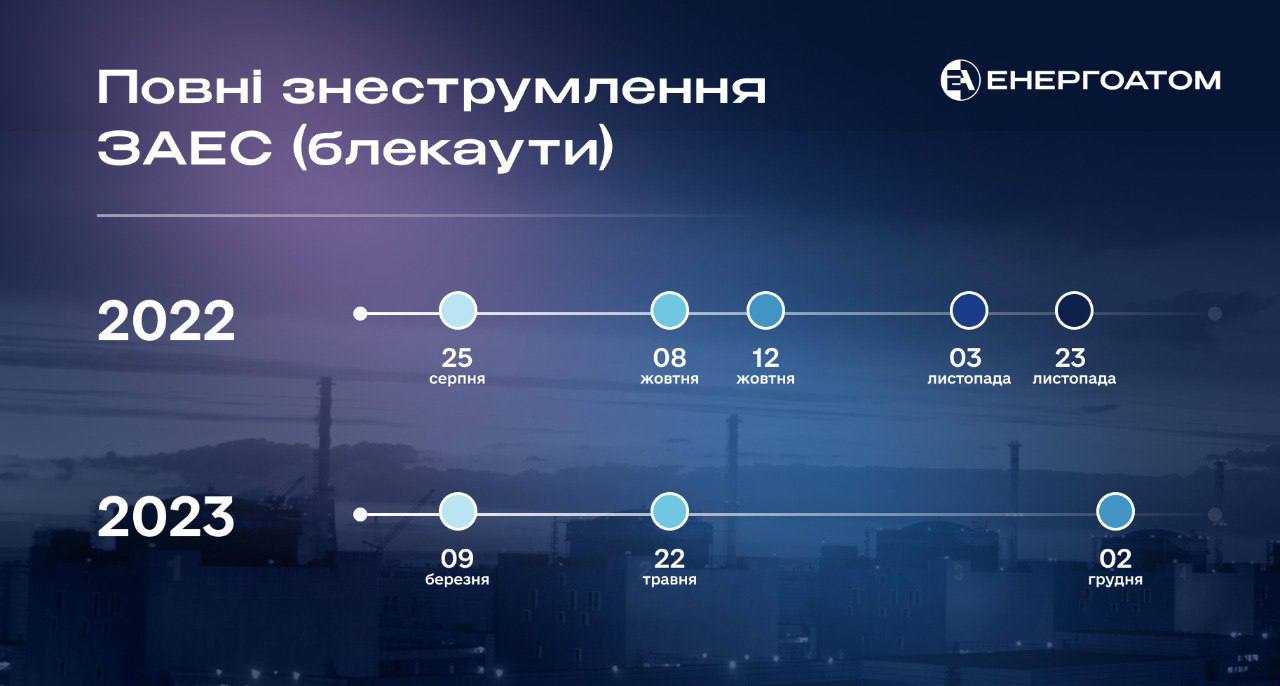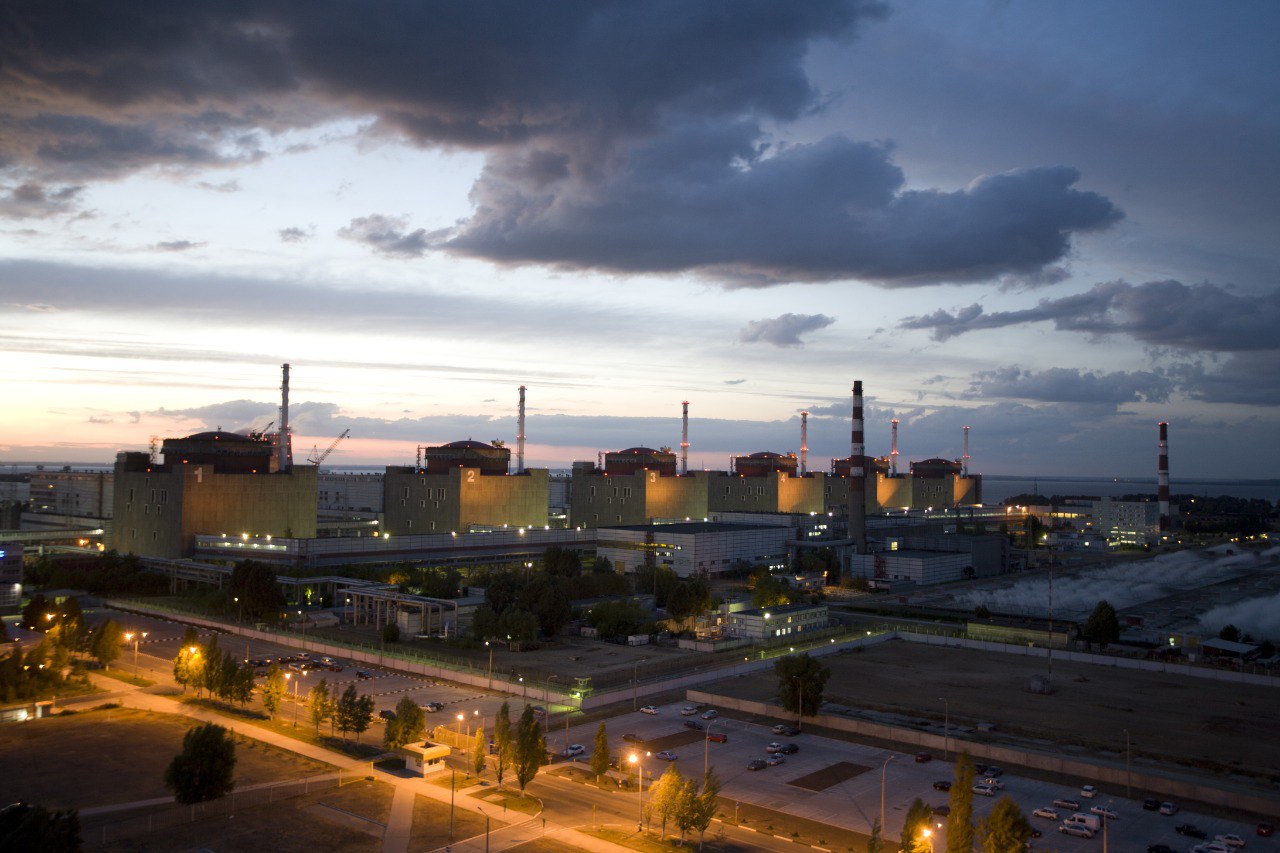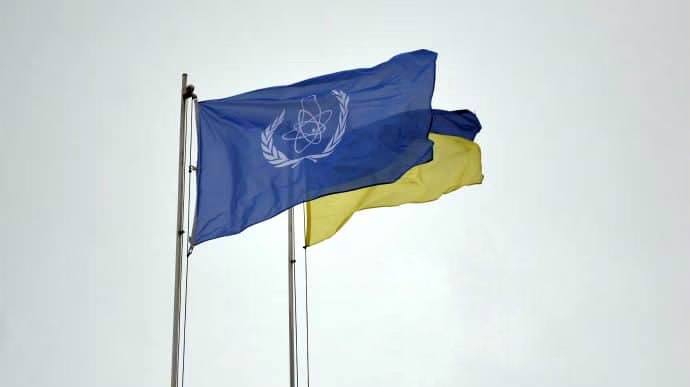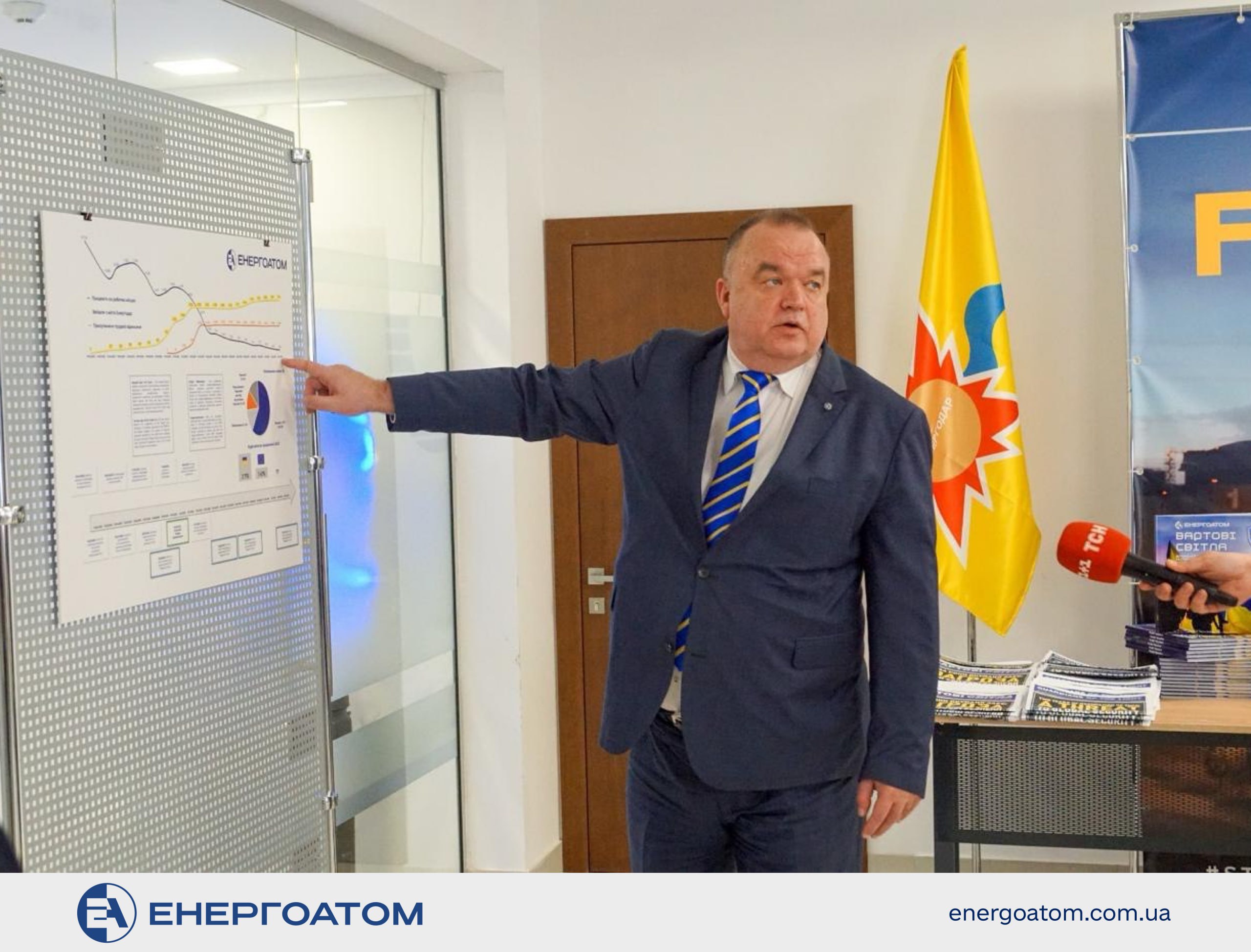05.03.2024
Two years of occupation of Zaporizhzhia NPP – eight complete blackouts

Each complete blackout poses a risk of an accident at nuclear power units. Preventing this from happening at the occupied ZNPP was possible only due to the professional actions of the Ukrainian personnel, who still had the possibility to perform their duties at their workplaces until February 1, 2024.
The complete blackout of NPP is perhaps the major factor that poses the greatest threats to nuclear and radiation safety. Since September 11, 2022, ZNPP power units have not generated electricity. However, the plant is still in operation and needs an external power supply. First of all, it is necessary for the cooling systems of the reactor core and nuclear fuel in the spent fuel pools to function.
The prerequisites for a complete blackout at the russian-seized Zaporizhzhia NPP are constantly emerging. For example, in the summer of 2022, the occupiers began shelling its infrastructure in the industrial zone, and even explosions were heard and hits were recorded on the plant site. Despite this, ZNPP continued to supply gigawatts of power to the Ukrainian power grid.
For the first time, Zaporizhzhia NPP was disconnected from the country's power grid on August 25, 2022. Then, due to hostile shelling, the only remaining 750 kV high-voltage overhead power line, Dniprovska, was damaged. Before the full-scale war, four such 750 kV transmission lines were in operation, but as of August 2022, three others had already been shelled and put out of commission. Since then, the plant has been under constant threat of blackout.
Despite Energoatom's repeated statements about genuine threats, the russian military kept shelling power lines and ZNPP open switchgears. By the end of 2022, four more blackouts occurred at the plant due to damage to power lines: on October 8 and 12, November 3 and 23. In 2023, there were three complete blackouts: on March 9, May 22, and December 2. In all cases, Ukrainian specialists managed to restore the operation of power lines in the shortest possible time under the circumstances.
ZNPP overcame seven complete blackouts while remaining connected to the sole main power line linking the facility to the Ukrainian power grid. Only on July 3, 2023, backup power supply from the national grid was finally restored via a 330 kV line.
The eighth blackout at the Zaporizhzhia NPP occurred at night on December 2, 2023, as a result of a 330 kV ZNPP – Ferosplavna power line breakdown and the cutting off of the only remaining 750 kV ZNPP – Dniprovska line. Having lost connection with both external lines, the Zaporizhzhia NPP switched to powering its in-house needs from diesel generators.
Recently, the plant was on the verge of blackout again. Due to shelling by the russian occupiers on February 21, 2024, the 330 kV overhead power line was cut off. Once again, the sole 750 kV Dniprovska overhead power line, linking ZNPP to the Ukrainian power grid, remained in operation.
When a nuclear power plant relies on diesel generators under conditions of complete blackout, its fate depends on a sufficient amount of fuel. In the absence of fuel, diesel generators stop operating in 10 days.
"Each such situation is extremely dangerous for nuclear and radiation safety of the entire continent. During those hours, the plant switches to power from diesel generators, and each time a countdown begins, which can result in a catastrophe," CEO of Energoatom Petro Kotin highlights.
Currently, the plant is powered by the sole line, damage of which will lead to another blackout.
MORE NEWS

Energoatom continues to support the employees of the temporarily occupied ZNPP
25.05.2024

The resolution calling for the immediate return of the Zaporizhzhia NPP to the control of Ukraine is the toughest one of all those approved earlier - Petro Kotin
12.03.2024

The IAEA Board of Governors has adopted a resolution demanding immediate return of Zaporizhzhia NPP to full control of Ukraine
08.03.2024

The occupiers blocked access permits for all ZNPP specialists who hadn't signed fake contracts with the russians
05.03.2024


 UA
UA





